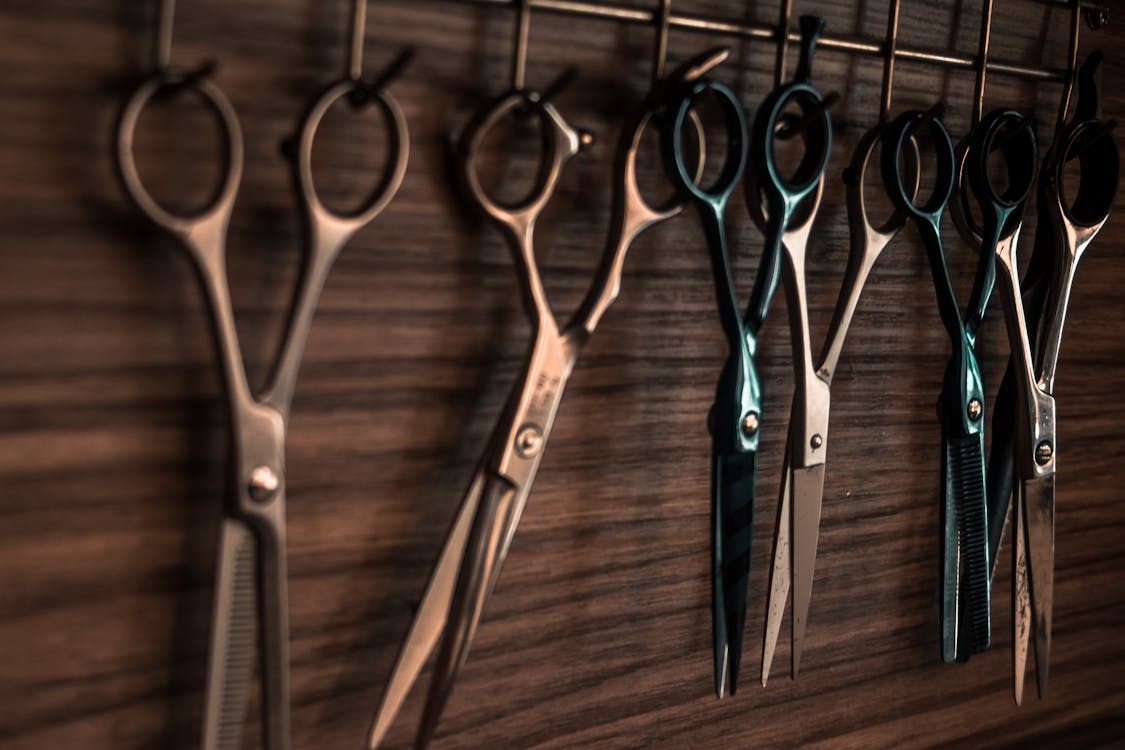Scissor sharpening near me for Vets
Clipper blade sharpening Specialized for Groomers
As a professional chef is aware of what it means to use sharp knifes. Not only does it ensure that your work is efficient and accurate, but it also assists in preventing injuries. This is where the honing steel is essential. Honing steel is an essential tool for any serious chef or butcher however, What exactly exactly do you mean by it? Why is it important for your knife skills? We'll look at these questions and more while we talk about the advantages of honing the steel and the best ways to use it.
What is honing?
Honing steel (also known as sharpening steel) is a long-length metal rod with a ridged, smooth surface. It can be used to sharpen and maintain the edge on knives. It is made up of two components that are the rod and the handle, which has an ergonomic grip that allows for effortless handling. The rod's body is adorned with lines that extend lengthwise across its body. These grooves create an edge when the knife moves over them. When you use honing steel properly, it produces an ultra-sharp edge on a knife blade that is more durable than were to employ whetstones or electric sharpeners by themselves (1).
What are the benefits of using honing steel?
One of the main benefits of using honing steel is that it helps extend the life the knives. When you regularly run your knives across the ridges of your honing steel, you can keep them sharper for longer periods of time , by realigning any edges that have dulled or become jagged over time (2). This helps you save time and money in the long run since you don't need to purchase new blades as frequently! Additionally, since honing steel isn't as abrasive as other sharpening tools like whetstones or grinders, it's not likely to damage or wear down the blades as time passes (3).
Another advantage of honing steel is safety: When used properly it will help prevent accidental cuts from dull blades by creating an edge that is razor-sharp each time you use it (4). When cutting through hard materials sharp blades may cause slips or nicks. Using honing steels regularly can help keep blades sharp and reduce the risk of injury by a large amount.
How can I properly use my honing steel correctly?
The correct way to hone steels requires patience and skill; Here are some easy steps to follow:
- 1.) Begin by holding the knife perpendicular to the rodbut not against it, at approximately a 20-degree angle (5).
- 2.) Then, move your blade slowly down one side of the rod at steady intervals until you get to the rod's point; repeat this movement on the other side, using light tension throughout every stroke (6).
- 3) Keep the same angle for each stroke--too little angle can cause an ineffective edge, and too much can harm the blade (7).
- 4.) Once both sides have been completed evenly, slowly move up towards its foundation until both sides have been completed before repeating strokes from tip-to-base several times, depending on how sharp the edge of your blade to be
- 5) Finally, finish off by wiping off any metal shavings with the help of a damp cloth, before placing them in a storage container to be used again!
Conclusion
To summarize that, honing stainless steels are indispensable equipment for every serious cutlery user who is looking for the most precise edges on their knives without damaging them or causing wear and tear caused by abrasive tools such as whetstones and electric sharpeners. They not only make you money because they prolong the lifespan of blades as well, but they can also help create a an improved and safer cutting experience with each session! Be sure to take care when using them , and use a steady and consistent approach to each stroke--good luck!
Sharpening Seated Knives
Serrated knives come in handy to accomplish a range of tasks such as slicing vegetables or cutting through meats that are tough. If the serrations of the knife start to wear and dull, it's the time to sharpen them. And for that you'll require the diamond sharpening tool. A diamond sharpening steel is a must-have tool for any professional or home cook. It allows you to quickly and precisely sharpen not just serrated knives but also straight-edge cutting tools and scissors.
The most effective method to sharpen your serrated knife is with a diamond cutting edge stone. This kind of stone is made from diamonds and is extremely hard. The harder the stone, the sharper its blade. Diamonds cut through all kinds of materials effortlessly. They are used in the production of jewelry and they are extremely expensive.
However, there are many options to sharpen your knife without spending many thousands. You can utilize a normal filet knife, a bench grinder, as well as sandpaper.
There are various kinds of stones that can be purchased in local hardware stores. Some prefer to use the emery paper, which is slightly less expensive than diamond stones. If you're looking to get really good outcomes, then go for a diamond stone.
What is a diamond-sharpening steel?
A diamond-sharpening steel (also known as honing rod) is a must-have device to keep the kitchen knives sharp. It features a diamond abrasive surface, which makes it ideal for sharpening straight-edge blades and serrated edges. The fine grit of the diamond surface aids in eliminating burrs and scratches from the edge of the blade while also rearranging the fibers of metal so that they are perfectly aligned when reattaching the edge of the blade. This helps ensure that the knife will hold its new edge longer than when using other types of rods or sharpening stones.
Using the Diamond Sharpening Steel in order to Sharpen serrated knives
Sharpening serrated knives requires specific methods that differ from the ones that are used to sharpen straight-edged blades. Before using your diamond sharpening rod make sure you read your product manual carefully, as directions may vary in accordance with the type of rod you've purchased.
- Step 1: First, use a soft , soft cloth to wash off any food particles or debris that may be on the blade. Next, you'll need your diamond sharpening device to sharpen the blade.
Step 2: Place the handle of the diamond sharpening steel firmly in one hand, while holding the serrated blade of your knife to its lengthwise surface at an angle between 20deg and 30deg with respect to its lengthwise face (as as shown on Figure 1.). - Step 3: Gently move your knife down its long sides in alternating forward and backward movements until all of its serrations have been brushed on it several times (as as shown in Figure 2.). Be careful not to push too hard or move too quickly--this could cause damage to your knife's edge and surface of the rod that you are honing!
- Step 4: After all the serrations of your knife have been brushed on it numerous times Repeat Step 3 over each individual serration until you are able to achieve the desired result (as shown in Figure 3).
- 5. To end up, offer each serration one final brushing with gentle pressure. Then, wipe off any residue left behind with an absorbent cloth before storing the items in a secure location!
Conclusion
Sharpening serrated knives can be a challenge if you don't know the right way to go about it. However using the right techniques and proper care, it's easy to maintain these tools by a couple of quick strokes on a quality honing rod such as diamond sharpening metal! Use these steps every time you're looking to smooth or alter the shape of your knife's edges. You'll be happy you took the time!
More info:
Zdravje in Dom Kombuča shears sharpening knife cutting tools

